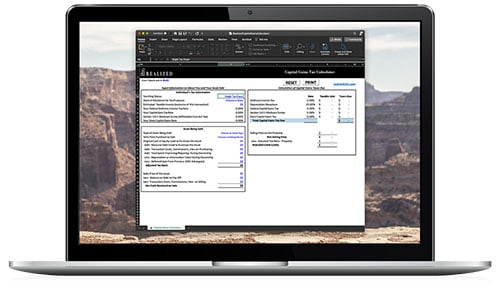
Discussing gains from investments can be confusing. For example, there are short and long term capital gains, deferred gains, and realized versus recognized gains. These distinctions are essential to understand as an investor and taxpayer working to maximize how much you gain and how much of any income you keep.
Realized Gain Versus Recognized Gain
A realized gain is essentially the entire profit an investor derives from selling an asset. You can calculate it by subtracting the adjusted tax basis from the net sales price. The adjusted tax basis is what the owner paid for the asset, minus whatever the owner deducted for depreciation while they owned it. The net sales price is the amount they receive for the asset, minus the closing or transaction costs. For example, if the investor has an adjusted basis of $100,000 and a net sales price of $200,000, the realized gain, in that case, is $100,000. The recognized gain is the taxable share of the realized gain. So, while an investor may realize a profit, the goal may be to avoid recognizing it.
How Can I Avoid Recognizing a Capital Gain?
One way to defer recognition of a gain is through a 1031 exchange. This tool is a means of deferring the recognition of capital gains realized on selling a real property asset by exchanging the proceeds from the sale for another property. However, this method only works if the investor doesn't need the cash for another purpose and intends to reinvest into another property. In the example above, suppose the investor has a realized gain of $100,000 but would prefer to defer paying capital gains taxes on the profit. In addition, the investor plans to reinvest the gain into an additional investment property. In that case, they may be able to invest more by deferring the taxes through a 1031 exchange transaction rather than a traditional sale and purchase.
The IRS clearly defines assets an investor can exchange via a section 1031 transaction. It only allows exchanges of “like-kind” real property. Real property is land, buildings, structures, and other improvements to the land. The property must be part of a business or held for investment, not a personal residence or assets held for sale. However, the property can range from residential rentals to retail, office, hospitality, industrial, and more. The designation of “like-kind” is similarly expansive, allowing exchanges from virtually any category with any other, as long as both are investment properties.
1031 Exchanges Have Strict Rules
Despite the inclusive nature of the IRS approach to the allowable assets, executing a 1031 exchange requires precision to defer the recognition of realized gains successfully. The exchange rules have strict timelines and require the use of a qualified intermediary to manage the receipt, administration, and distribution of the funds involved with selling and purchasing the included assets.
Deferral Can Continue Indefinitely
Returning to the example previously mentioned, suppose that the person exchanges into another property and several years later wants to sell that second asset and buy something else. They may want to change sectors or have some other motivation. The IRS allows sequential 1031 exchanges, with the investor continuing to defer the accumulated gains. Indeed, the taxpayer can continue to avoid recognizing a realized gain until they distribute the asset in their will. At that time, the heir will inherit the property with a step-up in basis to the current value, eliminating the capital gains taxes.
This material is for general information and educational purposes only. Information is based on data gathered from what we believe are reliable sources. It is not guaranteed as to accuracy, does not purport to be complete and is not intended to be used as a primary basis for investment decisions.
Realized does not provide tax or legal advice. This material is not a substitute for seeking the advice of a qualified professional for your individual situation.
Examples are hypothetical and for illustrative purposes only. Withdrawal strategies should take into account the investment objectives, financial situation and particular needs of the individual. Costs associated with a 1031 transaction may impact investor’s returns and may outweigh the tax benefits. An unfavorable tax ruling may cancel deferral of capital gains and result in immediate tax liabilities. All real estate investments have the potential to lose value during the life of the investment.


